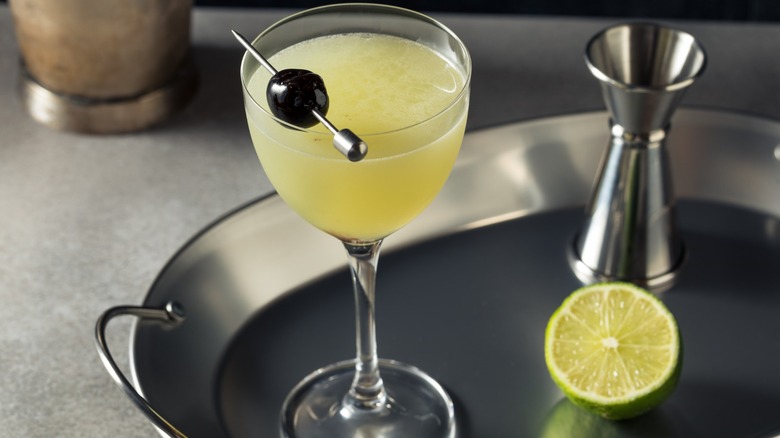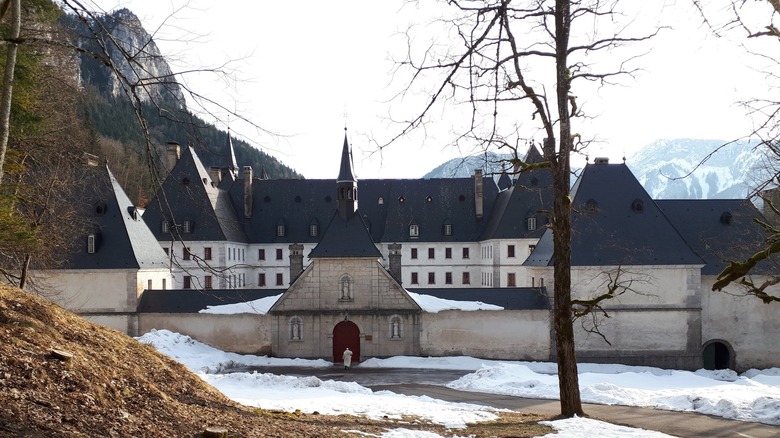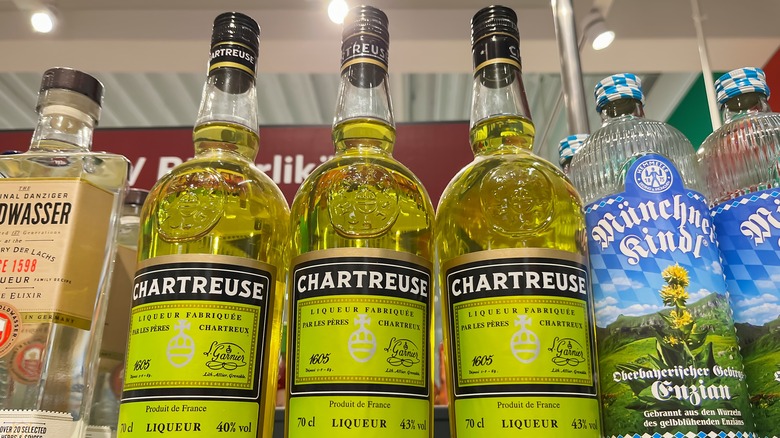The Chartreuse Liqueur We Know Today Started Off As A Monk-Made Elixir
Chartreuse — a color better known these days as "Brat Green" – gets its name not from a herb or a flower as one might expect, but from an alcoholic beverage. More accurately, chartreuse gets its name from an alcoholic beverage named after a monastery, which is itself named after a French mountain range. Sounds a bit confusing, right? Not if you know your facts about the Carthusian Order of monks.
The beverage itself is a light green liqueur made from over 100 different plants and flavored with sweet spice notes and a deep, herbaceous funk. Chartreuse has such a strong taste that, even when used as a mixer, it's recommended you only use a small amount. Verte chaud, which uses chartreuse as an ingredient to amp up hot chocolate, suggests 2 ounces of the green stuff. Meanwhile, other cocktail recipes recommend you add less than a full measure – still more than enough to make bright green cocktails for St. Patrick's Day. But despite its vivid color and the explosion of flavor it provides, chartreuse comes from a sober, decidedly non-Brat environment.
Chartreuse is produced by French monks
High in the Chartreuse Mountains, near the city of Grenoble in southeast France, sits the Grande Chartreuse, a chateau built on the original monastery site of the Carthusian Order. Today, this is still where the Order lives, works, and worships, allowing no visitors with very few exceptions. Director and documentarian Philip Gröning wrote a letter asking for permission to film the monks, which was granted almost 20 years later. The result was "Into Great Silence," an outstanding documentary about the Grande Chartreuse.
Anything that's been around for almost a thousand years will have to have seen a lot of history, and the Grande Chartreuse is no exception. The French Revolution saw the monks cast out of the chateau, unable to return for almost 50 years. In 1902, a law effectively banned religious orders like the Grande Chartreuse and meant the monks had to go into exile, during which time they established another distillery in Tarragona, Spain. Eventually, in 1940, the monks were allowed back to their chateau.
Only two monks know the formula for chartreuse
The main Chartreuse distillery is not located in the Grande Chartreuse but in the nearby town of Aiguenoire. The distillery has had to move a few times over the years for various reasons. The herbal mixture is prepared by just two monks — the only two people in the entire world who know the precise combination of the 130 plants used to make chartreuse. Eat your heart out, Coca-Cola!
In 2019, the monks announced that they plan to limit their production of chartreuse to about one and a half million bottles per year. Although the sale of chartreuse provides financial support for the monastery, the monks have cited environmental concerns and sustainability as reasons for tapering back production. While those who love unique liqueurs might be disappointed by the decision, it's clear that the monks favor a life of prayer over all else. And, in an increasingly commerce-driven world, such an attitude is commendable and reflects growing trends toward sustainable living and zero-waste grocery shopping.


